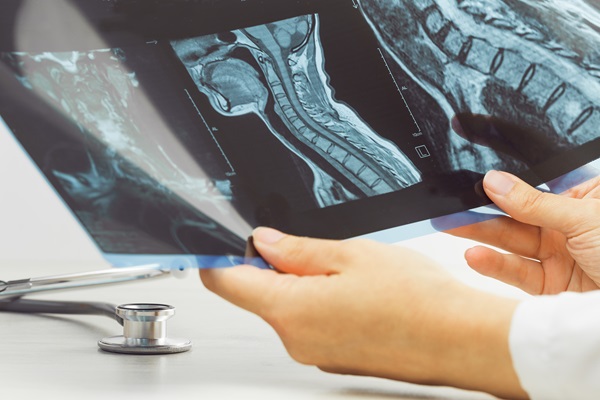How Spinal Cord Surgery Can Restore Function

Experiencing a spinal cord injury can alter your life, affecting your mobility and overall quality of life. When minimally invasive treatment methods do not work, spinal cord surgery can help restore function and relieve discomfort. An experienced neurosurgeon can discuss spinal cord surgery options based on your symptoms, medical history, and treatment goals.
Understanding spinal cord injuries
The spinal cord relays information between the brain and the rest of the body. The body loses essential functions when it sustains an injury because the nerves cannot communicate with the brain properly. Many spinal cord injuries are trauma-based, such as car accidents, falls, or sports injuries. Most of these can be divided into two types of spinal cord injury: complete or incomplete.
Complete spinal cord injury
This type of spinal cord injury causes permanent damage to the injured area, such as paraplegia or tetraplegia.
Incomplete spinal cord injury
An incomplete spinal cord injury refers to partial damage to the spinal cord. A patient's movement and sensation will depend on the injured area and the severity of the injury.
Levels of spinal cord injury
There are four sections of the spinal cord that can impact the level of spinal cord injury: cervical, thoracic, lumbar, and sacral. Each section of the spine protects different groups of nerves that control and communicate with the body. These levels of spinal cord injury include:
- Cervical spinal cord injuries: These injuries affect the head and neck region above the shoulders. They are the most severe level of spinal cord injury.
- Thoracic spinal cord injuries: Thoracic spinal cord injuries affect one's upper chest, mid-back, and abdominal muscles. Arm and hand function is typically unaffected by this level of spinal cord injury.
- Lumbar spinal cord injuries: These spinal cord injuries affect the hips and legs. People with these injuries may need a wheelchair or walk with braces when affected by this level of injury.
- Sacral spinal cord injuries: These injuries affect the hips, thighs, buttocks, and pelvic organs. Individuals should be able to walk with this level of spinal cord injury.
Types of spinal cord surgeries
Decompression
One common type of spinal cord surgery is decompression. This procedure aims to alleviate pressure on the spinal cord. A neurosurgeon creates space in the spine to relieve pressure on the spinal cord and nerves. This provides patients relief from symptoms such as chronic pain and numbness while restoring normal spinal cord function.
Spinal fusion
In cases where the patient's spinal cord is severed, the neurosurgeon may need to use more intricate techniques. Spinal fusion involves stabilizing the spine by fusing two or more vertebrae through an autograft (the patient's own bone) or an allograft (donor bone). The neurosurgeon may also use instrumentation, such as rods, screws, plates, or interbody cages, to support the bone graft. This surgical technique reduces the risk of further damage to the injured area and stabilizes the spine.
Nerve grafts
Another surgical approach is nerve grafts. This procedure replaces damaged nerve tissue with healthy donor nerves, promoting regeneration and reconnecting disrupted pathways. Nerve grafts can significantly improve the patient's quality of life and long-term function.
Schedule a consultation
When minimally invasive treatments have not worked, spinal cord surgery can give you relief after sustaining a spinal cord injury. While there is no universal cure for these injuries, spinal cord surgery can help you regain lost function and improve your quality of life. Call our office today to learn more or schedule a consultation.
Request an appointment here: https://www.brainandspineni.com or call Brain and Spine Neuroscience Institute at (813) 751-2029 for an appointment in our Palm Harbor office.
Check out what others are saying about our services on Yelp: Spinal Cord Surgery in Palm Harbor, FL.
Related Posts
A stroke treatment center acts fast when a neurological emergency strikes, delivering critical care when timing matters most. These specialized teams move quickly, utilizing advanced diagnostics, efficient procedures, and coordinated support to manage even the most complex stroke cases effectively. Through quality care, patients and their loved ones can find a clearer path to recovery…
Neurostimulation offers a targeted way to manage symptoms from certain neurological disorders by sending gentle signals to precise areas of the nervous system. With careful planning, neurostimulation can reduce tremors, limit seizures, alleviate chronic pain, and enhance daily function without requiring major incisions.Neurostimulation uses a small, implantable system or an external device to deliver controlled…
Stem cell treatment shows promise for helping with neurological disorders by repairing and regrowing damaged cells in the nervous system. This advanced therapy is still being studied for its ability to support healing at a cellular level, potentially improving the patient's quality of life and daily function. Nevertheless, with continued advancements in medical research and…
When spinal cord compression interferes with mobility, sensation, or organ function, spinal cord surgery may offer relief and prevent further neurological decline. However, any intervention involving the central nervous system requires careful planning and informed decision-making. Understanding the pros and cons helps patients and families navigate this important choice with greater clarity.The primary goal of…
